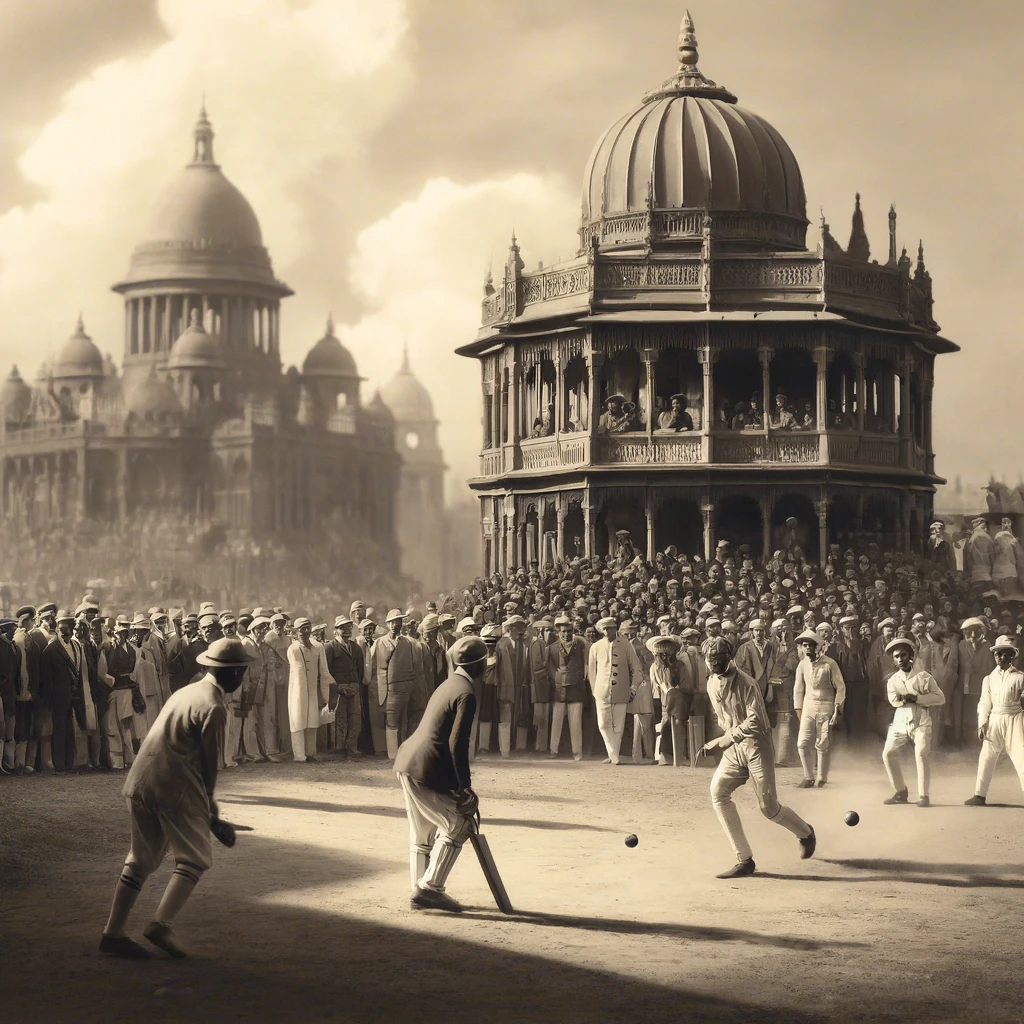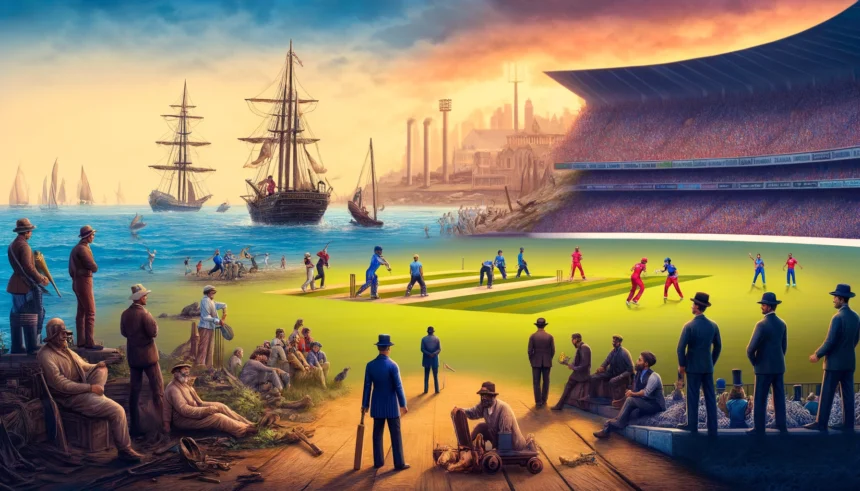Cricket in India is more than just a sport; it is a phenomenon that has woven itself into the fabric of the country’s culture and history. This exploration into the history of cricket in India reveals not just how the game evolved, but also how it became an integral part of India’s identity. Understanding the origins and development of cricket in India offers insight into not only a sport but also a nation’s journey. This comprehensive article is a must-read for enthusiasts and historians alike, as it uncovers the multifaceted saga of cricket in the Indian subcontinent.
The Birth of Cricket in India
Cricket’s journey in India began in the 18th century. The first recorded instance of the game being played in India was in 1721 by sailors of the East India Company. This marked the introduction of cricket to the Indian subcontinent. Initially, the sport served as a leisure activity for English officials but soon caught the attention of the local populace.
Early Days: Cricket’s Introduction by the East India Company
The East India Company played a pivotal role in introducing cricket to India. As the company established its foothold in India for trade and subsequently for colonial rule, cricket emerged as a popular leisure activity among English officials and soldiers. It served as a cultural bridge, gradually integrating the local populace into the game.

Calcutta Cricket Club: A Landmark in Indian Cricket History
Founded in 1792, the Calcutta Cricket Club is one of the oldest cricket clubs in India and a significant landmark in Indian cricket history. It was established by English officials and soon became the epicenter of cricket activities in Bengal, laying the foundation for the sport’s growth in Eastern India.
Oriental Cricket Club: Integrating India into the Cricket World
The Oriental Cricket Club, established in Bombay (now Mumbai) in 1848, was instrumental in bringing Indian players into the sport, which was till then dominated by the English. This club marked the beginning of a new era where cricket started to transcend social and racial barriers, becoming more inclusive.
Read More: What is Powerplay in Cricket: A Comprehensive Guide
The Evolution of Domestic Cricket in India
Domestic cricket in India took a formal shape with the inception of first-class cricket competitions like the Bombay Triangular in 1907, later becoming the Quadrangular, and eventually the Ranji Trophy in 1934. These tournaments provided a platform for showcasing Indian talent and became a stepping-stone for players to make their mark in international cricket.
The Ranji Trophy: A Launchpad for Cricketers
The Ranji Trophy, named after cricket legend Ranjitsinhji, is the premier first-class cricket tournament in India. Since its inception, the Ranji Trophy has been a pivotal launchpad for nurturing cricket talent from various regions across the country. This tournament has been instrumental in identifying and shaping players who have contributed significantly to Indian cricket.
Building the National Team
Performance in domestic tournaments like the Ranji Trophy often becomes a criterion for selection into the Indian national cricket team. Many legendary players have risen through these ranks to achieve international fame.
The Board of Control for Cricket in India (BCCI)
The Board of Control for Cricket in India (BCCI), established in 1928, marked a turning point in Indian cricket history. It signified the formalization and regulation of cricket in India, setting the stage for more structured domestic and international play. The BCCI played a critical role in shaping the future of Indian cricket, guiding it towards becoming a national phenomenon.
BCCI’s Role in Organizing Cricket
As the governing body for cricket in India, the BCCI played a crucial role in organizing domestic tournaments, managing the Indian cricket team, and representing India in the International Cricket Council (ICC). The establishment of the BCCI was a significant development in Indian cricket.

India’s Entry into International Cricket
India’s foray into international cricket began with its admission as a full member of the ICC in 1926. This milestone allowed India to participate in Test cricket, marking its debut in the international arena. Despite early struggles, the Indian cricket team gradually emerged as a formidable force, with landmark victories and the emergence of world-class players.
Early International Matches
India played its first Test match in 1932 against England at Lord’s Cricket Ground. Although India lost the match, it was a significant moment that marked the beginning of India’s journey in international cricket.
Cricket Post-Independence: A New Era
Post-independence, cricket in India entered a new era, becoming a symbol of national pride and unity. The Indian cricket team, now representing a sovereign nation, began to carve out its identity, distancing itself from its colonial past. This period witnessed the emergence of Indian cricketing legends, furthering the country’s love affair with the sport.
The Golden Age of Indian Cricket
The latter half of the 20th century is often referred to as the golden age of Indian cricket. This era saw India producing some of its greatest players and achieving remarkable successes, including the iconic 1983 Cricket World Cup victory. Cricket during this period became an integral part of India’s cultural fabric.
The 1983 Cricket World Cup
The 1983 Cricket World Cup victory was a landmark moment in Indian cricket history. Under the captaincy of Kapil Dev, India defeated the mighty West Indies to win its first World Cup. This victory ignited a cricketing passion across the nation and inspired a new generation of cricketers.
Modern-Day Indian Cricket and Global Dominance
Today, Indian cricket stands at the forefront of the global stage, characterized by its success in various formats of the game. The Indian Premier League (IPL), a T20 cricket tournament, has revolutionized the sport, combining athletic prowess with entertainment. Indian cricket’s journey from its colonial roots to a global powerhouse reflects the nation’s evolving narrative.
The Indian Premier League (IPL)
The IPL, introduced in 2008, has been a game-changer for cricket in India, merging the sport with entertainment and establishing a global appeal. This T20 league has not only redefined cricket’s format but has also become a commercial and cultural phenomenon.
A Fusion of Cricket and Entertainment
The IPL is notable for its fast-paced, entertaining format, attracting a new audience to cricket. Its blend of sports and entertainment elements has broadened cricket’s appeal beyond traditional fans.
Global Stage for Cricketing Talent
The league brings together international stars and Indian players, creating a high-profile platform for emerging talent. This integration has significantly raised the quality and competitiveness of the game.
Impact on Cricket’s Economy
The IPL’s commercial success, through sponsorships and broadcasting rights, has made a considerable impact on the sport’s financial aspects, benefiting players and the industry alike.
Conclusion: Cricket as India’s Heartbeat
The history of cricket in India is a chronicle of a nation’s journey, mirroring its social, political, and cultural evolution. From the streets of Cambay to the iconic Lord’s Cricket Ground, cricket has been a unifying thread, transcending regional and social divides, and emerging as a sport that is akin to a religion in India. As India continues to assert its dominance in international cricket and innovate with tournaments like the IPL, the story of Indian cricket is far from over – it is a saga that continues to evolve and captivate millions.
Key Takeaways
- Cricket in India began in the early 18th century with the arrival of the East India Company.
- The establishment of cricket clubs in Calcutta marked the sport’s institutionalization.
- The BCCI’s formation was pivotal in structuring and promoting cricket in India.
- India’s entry into international cricket and the ICC was a significant milestone.
- Post-independence, cricket became a symbol of national pride and unity.
- The golden age of Indian cricket saw the emergence of legendary players and iconic victories.
- Domestic competitions have been crucial in developing cricket talent in India.
- Modern-day Indian cricket, epitomized by the IPL, signifies India’s global dominance in the sport.
This comprehensive exploration of cricket’s journey in India underscores the sport’s deep-rooted significance in the country’s history and culture. Cricket in India is not just a game; it’s a legacy that continues to shape and reflect the nation’s evolving narrative.




